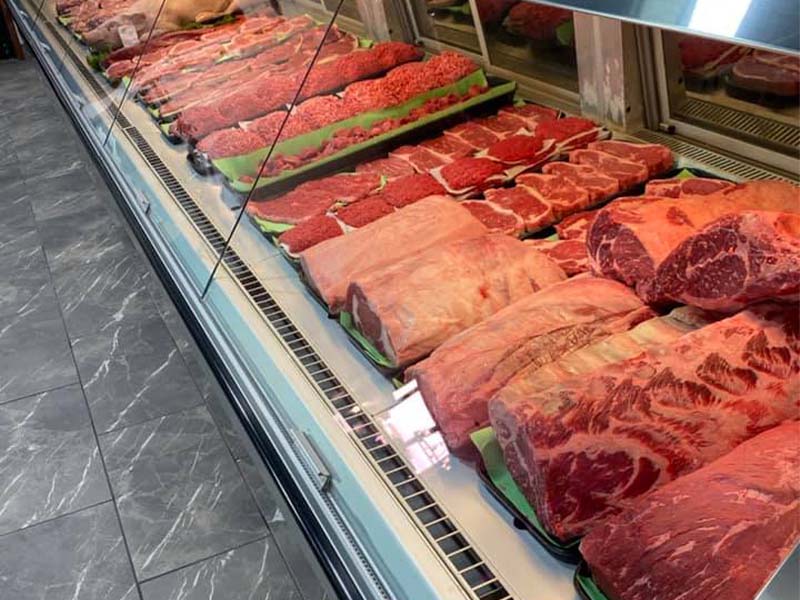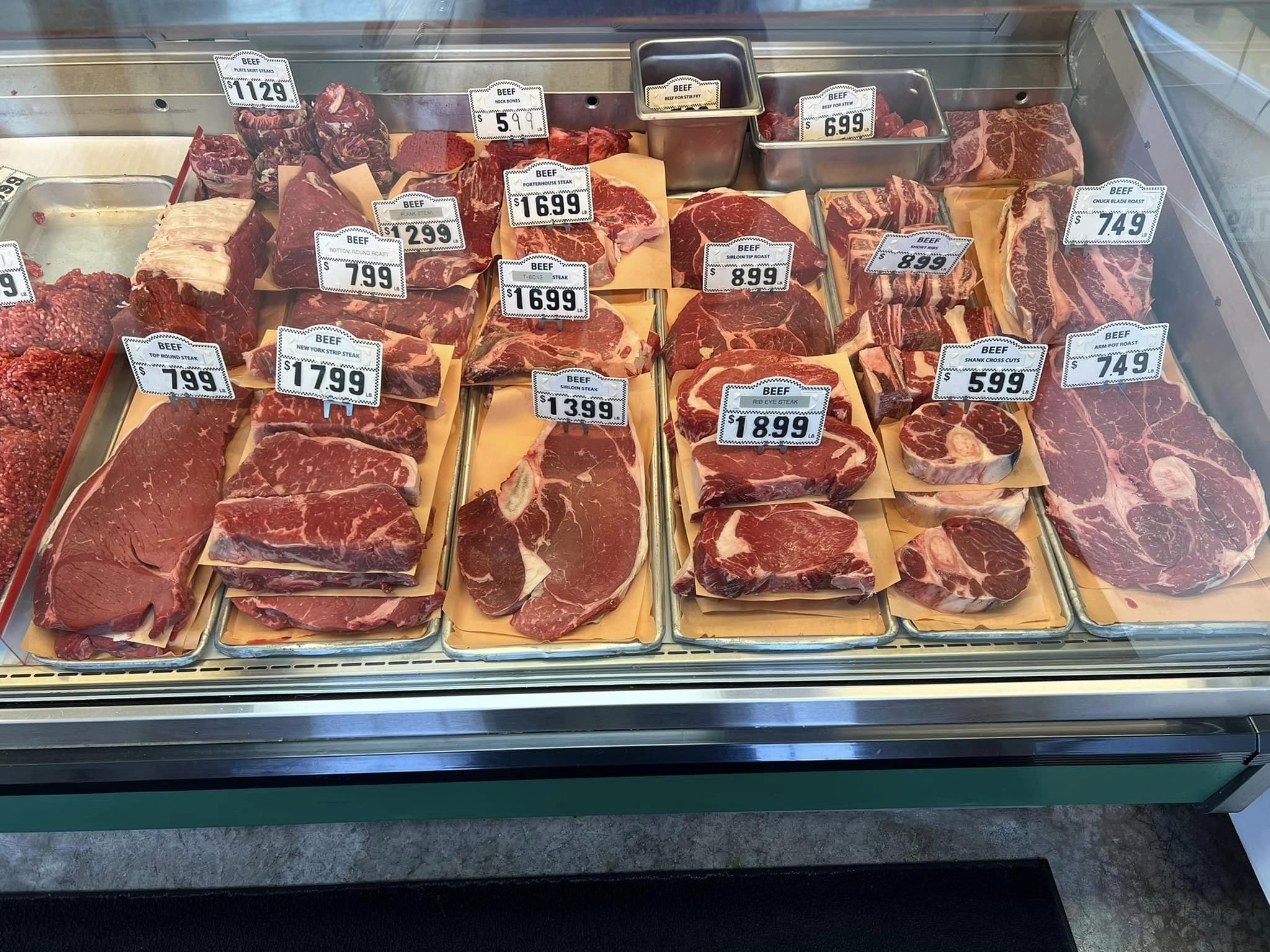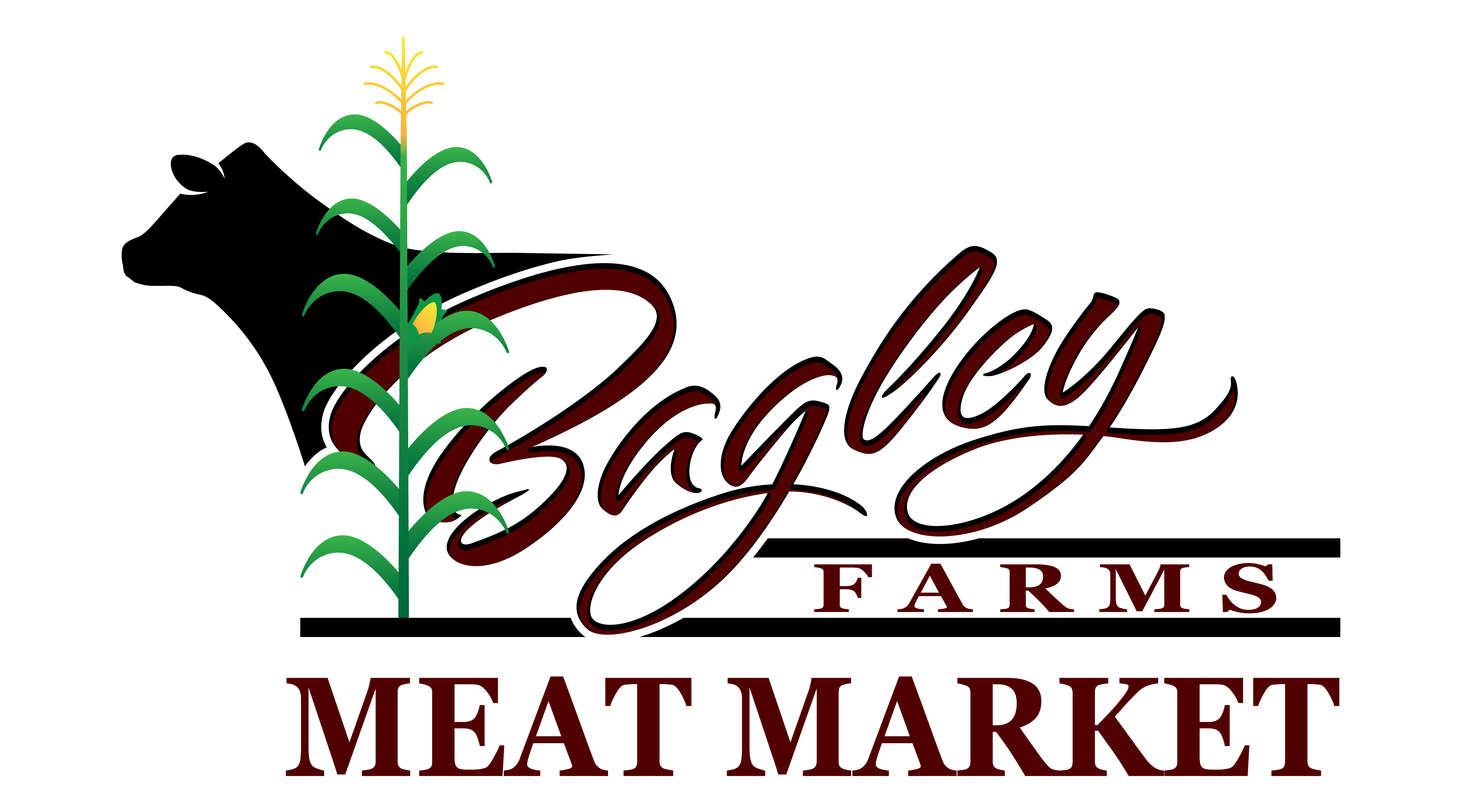Get the most effective Deals on Fresh Meat at Bagley Farms Meat Market Edwardsville IL
Get the most effective Deals on Fresh Meat at Bagley Farms Meat Market Edwardsville IL
Blog Article
Reveal the Art of the Butcher's Cut in a Modern Meat Market
In the ever-evolving landscape of modern-day meat markets, the butcher's cut has actually transcended its standard roots, merging olden workmanship with modern methods. What absolutely establishes the contemporary butcher apart is their ability to build a much deeper connection in between consumers and the origins of their meat.
Evolution of Butchery Strategies

The mid-20th century saw butchery strategies even more fine-tuned by scientific insights into muscle mass biology and meat aging, boosting both inflammation and taste. Technologies like vacuum cleaner packaging and refrigeration expanded item shelf-life, enabling butchers to branch out offerings and improve quality control. This duration also noted the increase of specialized devices, such as band saws and meat slicers, which boosted precision and performance in meat handling.
The 21st century has presented electronic technology right into the butchery world. Digital systems now help in monitoring animal provenance and enhancing cuts to fulfill specific client choices. Additionally, a resurgence in artisanal butchery has actually arised, mixing standard skills with modern knowledge to cater to customers looking for moral and sustainable meat options. This advancement emphasizes a vibrant interaction between practice and development, meeting contemporary needs while protecting the craft's heritage.

Understanding Meat Cuts

Comprehending the ins and outs of meat cuts is important for both butchers and consumers looking for high quality and value. Each cut originates from a different component of the animal, imparting one-of-a-kind flavors, appearances, and food preparation methods. Proficiency of these differences not just improves culinary experiences yet additionally takes full advantage of the energy of each carcass. For butchers, specific cuts show ability and respect for the craft, guaranteeing very little waste and ideal yield.
The primary groups of meat cuts include primitive, sub-primal, and retail cuts. Butchers after that break these down even more right into sub-primal cuts, prior to ultimately producing retail cuts readily available to customers, like ribeye or tenderloin.
Comprehending muscle structure is crucial; muscles made use of much more often by the animal tend to be tougher and are best fit for slow food preparation approaches, while less-used muscles, like those found in the loin, are extra tender and suitable for cooking or roasting. Experience with these differences encourages customers to make enlightened choices, boosting their cooking ventures.
Picking Quality Meat
Choosing the best meat entails greater than simply selecting an aesthetically attractive piece from the screen. The art of choosing high quality meat calls for a critical eye and expertise of specific qualities that represent quality and quality. Pay interest to the color; beef needs to have a bright, cherry-red hue, while lamb ought to display a soft pink tone, and pork a pale pink. This suggests the meat is fresh and hasn't been revealed to oxygen for too long.
Second of all, consider the marbling, which refers to the white streaks of fat within the muscle. Proper marbling is a vital indication of tenderness and taste, as it melts during cooking, enhancing the meat's juiciness. Bear in mind, higher marbling commonly correlates with exceptional top quality cuts, such as USDA Prime.
Texture is an additional important element; news meat ought to feel solid to the touch, not slimy or excessively soft. Furthermore, bear in mind the aroma. Fresh meat must check over here have a tidy, neutral odor, without any type of sour or off-putting smells.
Pairing Cuts With Food Preparation Approaches
Efficiently pairing cuts of meat with the proper cooking approaches is crucial for accomplishing optimal flavor and appearance. Various cuts vary in inflammation, marbling, and connective cells material, each calling for particular methods to open their possibility. Tender cuts like filet mignon and ribeye, with their integral marbling, advantage from high-heat, quick-cooking methods such as barbecuing or pan-searing. These methods boost the meat's all-natural flavors and guarantee a juicy finish.
On the other hand, harder cuts like brisket and chuck roast are abundant in collagen, which damages down right into jelly when cooked gradually. These cuts are excellent for braising or slow roasting, allowing the meat to soften in time and create deep, intricate tastes. Similarly, cuts such as short ribs and pork shoulder make out well with slow-cooking approaches, where expanded cooking times change their durable appearances into succulent dishes.
Lamb shanks and oxtail, which call for long term cooking to soften, are best candidates for stewing or sluggish simmering. These techniques coax out rich, passionate flavors while preserving wetness. By recognizing the one-of-a-kind qualities of each cut, cooks and home chefs alike can elevate their culinary creations, making sure each meal is both pleasing and remarkable.
The Butcher's Role Today
Navigating the advancing landscape of the modern-day meat market, the butcher's duty today expands past simple preparation of cuts. Contemporary butchers are culinary view it now craftsmens, educators, and advocates for sustainable techniques.
In addition to crafting specific cuts, butchers now involve straight with consumers, using cooking suggestions and customizing choices to fit private demands and choices. Their experience in meat aging, marbling, and flavor profiles equips customers to make educated choices, improving their culinary experiences. This customized solution exemplifies the butcher's developing role as a relied on advisor in the cooking area.
Furthermore, butchers are pivotal in reducing waste, making use of entire animals to create diverse products such as sausages and supplies - bagley farms meat market edwardsville il. This detailed strategy not only respects the animal however likewise lines up with contemporary sustainability goals. This way, the contemporary butcher personifies both tradition and advancement, adapting to an ever-changing market while protecting the creativity and integrity of their craft

Conclusion
The modern butcher's craft elaborately weaves conventional methods with modern-day innovations, emphasizing lasting techniques and ethical sourcing. Proficiency in comprehending diverse meat cuts and high quality indicators encourages butchers to provide enlightened referrals, lining up certain cuts with ideal cooking approaches. This know-how not just elevates culinary experiences but likewise enhances the link in between consumers and the beginnings of their food. By honoring historic methods while accepting contemporary demands, the butcher's function stays essential in today's innovative meat market.
Report this page